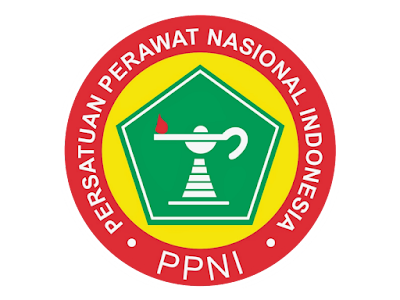DESKRIPSI GEJALA YANG DIALAMI OLEH ANAK DENGAN KANKER
DOI:
https://doi.org/10.35328/keperawatan.v13i1.2660Keywords:
Gejala , Anak, KankerAbstract
Children with cancer have one or more physical symptoms (low appetite, fatigue, and pain) and psychological symptoms (sadness and worry) related to the cancer or side effects of treatment which can affect their quality of life. Helping patients recognize both physical and psychological symptoms is important for developing mere effective treatment interventions. The aim of the research is to find out a description of the symptoms experienced by children with cancer in Jakarta. This research used a cross-sectional design with sample of 78 cancer children aged 7-18 years who were selected using purposive sampling. Data were collected using the Memorial Symptom Assessment Scale (MSAS) questionnaire and the data analysis used was univariate. The most common symptoms experienced by cancer children aged 7-12 years were changes in eating patterns (58.8%), nausea/vomiting (35.3%), pain (33.3%), difficulty sleeping (31.4%). fatigue (27.5%), feeling sad (25.5%). The most common symptom was a change in eating patterns (58.8%) with a very short frequency (43.3%) and a little disturbing (30%). The most common symptoms experienced by cancer children aged 13-18 years were pain (59.3%), hair loss (55.5%), lack of energy (51.9%), changes in skin (48.1%), lack of appetite (48.1%),sweating (44.4%) and feeling of being irritable (44.4%). The most common symptoms were pain (59.3%), with frequency sometimes (93.7%), moderate severity (37.5%) to severe (37.5%) and quite annoying (37.5%). This research shows that children with cancer in Jakarta experience various physical and psychological symptoms. Understanding related symptoms is very important to develop more appropriate and effective nursing interventions. Further research is needed to explore interventions that can reduce symptoms and improve the quality of life of children with cancer
Downloads
References
Arini,T. (2018). Symptom Experience pada Anak Kanker di Yogyakarta. Prosiding Seminar Nasional dan Diseminasi Penelitian Kesehatan: Tasikmalaya
Ball, J.W., Bindler, R.C & Cowen, K.J. (2010). Child health nursing partnering with children & families (2nd ed.). New Jersey: Person;
Collins, J.J., Byrners, M.E., Dunkel, I.J., Lapin, J., Nadel T., Thaler, H.T., et al. (2000). The measurement of symptoms in children with cancer. Journal of Pain and Symptom Management: 19 (5), 363-377
Collins, J.J, Devine, T.D, Johnson, E.A.,Kilham, H.A., Pinkerton, C.R. (2002). The Measurement of Symptoms in Young Children with Cancer: The Validation of the Memorial Symptom Assessment Scale in Children Aged 7–12. Journal of Pain and Symptom Management: 23 (1), 10-16
Enskar, K., & Essen, L. von. (2008). Physical problems and psychosocial function in children with cancer. Pediatric Nursing, 20(3), 37– 42
Hockenberry, M. J., Hooke, M. C., Gregurich, M., McCarthy, K., Sambuco, G., & Krull, K. (2010). Symptom clusters in children and adolescents receiving cisplatin, doxorubicin, or ifosfamide. Oncology Nursing Forum, 37(1), E16–27. doi:10.1188/10.ONF.E16-E27
Huijer, H.AS; Sagherian, K; Tamim, H (2013). Quality of life and symptom prevalence as reported by children with cancer in Lebanon. European Journal of Oncology Nursing, 17(6), 704–710. doi:10.1016/j.ejon.2013.09.004
Kementrian Kesehatan Republik Indonesia. (2018). Riset Kesehatan dasar (RISKESDAS) 2018. Jakarta: Kementrian kesehatan RI.
Miller, Elizabeth; Jacob, Eufemia; Hockenberry, Marilyn J. (2011). Nausea, Pain, Fatigue, and Multiple Symptoms in Hospitalized Children with Cancer. Oncology Nursing Forum, 38(5), E382–E393. doi:10.1188/11.ONF.E382-E393
Rosenberg, A. R., Orellana, L., Ullrich, C., Kang, T., Geyer, J. R., Feudtner, C., … Wolfe, J. (2016). Quality of Life in Children with Advanced Cancer: A Report from the PediQUEST Study. Journal of Pain and Symptom Management: 52(2), 243–253. doi:10.1016/j.jpainsymman.2016
Samantarath P., Pongthavornkamol K., Olson K., Sriyuktasuth A., & Sanpakit K. (2018). Multiple Symptoms and Their Influences on Health-Related Quality of Life in Adolescents with Hematologic Malignancies Undergoing Chemotherapy. Pacific Rim Int J Nurs Res, 22 (2); 319-331.
Sarumpaet, W.T. (2020). Hubungan simtom depresi dengan hendaya kognitif pada penderita Ca Mammae di Rumah Sakit Haji Medan. (Skripsi, Fakultas Kedokteran, Universitas Islam Sumatera Utara. Diakses dari https://repository.uisu.ac.id/bitstream/123456789/551/1/Cover%2C%20Bibliography.pdf
Steliarova-Foucher E, Colombet M, Ries LAG, et al. (2017). International incidence of childhood cancer, 2001-10: a population-based registry study. Lancet Oncol.: 18(6):719-731.
The Lancet Child Adolescent Health. (2019). Fighting childhood cancer with data. Lancet Child Adolesc Health 2019; 3:585.doi:10.1016/S2352 4642(19)30238-X
Ullrich, C.K.; Dussel, V.; Orellana, L.; Kang, T.I.; Rosenberg, A.R.; Feudtner, C.; Wolfe, J. (2018). Self-reported fatigue in children with advanced cancer: Results of the PediQUEST study. Cancer Sep 15;124(18):3776-3783.
WHO. Childhood cancer. [Internet]. (2021). [diakses 22 Januari, 2021]. https://www.who.int/news-room/fact-sheets/detail/cancer-in-children
World Health Organization. (2021). CureAll framework: WHO global initiative for childhood cancer: increasing access, advancing quality, saving lives. World Health Organization. https://apps.who.int/iris/handle/10665/347370
Yeh, C.-H.; Wang, C.-H.; Chiang, Y.-C.; Lin, L.; Chien, L.-C. (2009). Assessment of symptoms reported by 10- to 18-year-old cancer patients in Taiwan. J. Pain Symptom Manag: 38, 738–746. [CrossRef] [PubMed]
Downloads
Published
Issue
Section
License
Copyright (c) 2024 Al-Asalmiya Nursing: Jurnal Ilmu Keperawatan (Journal of Nursing Sciences)

This work is licensed under a Creative Commons Attribution 4.0 International License.














